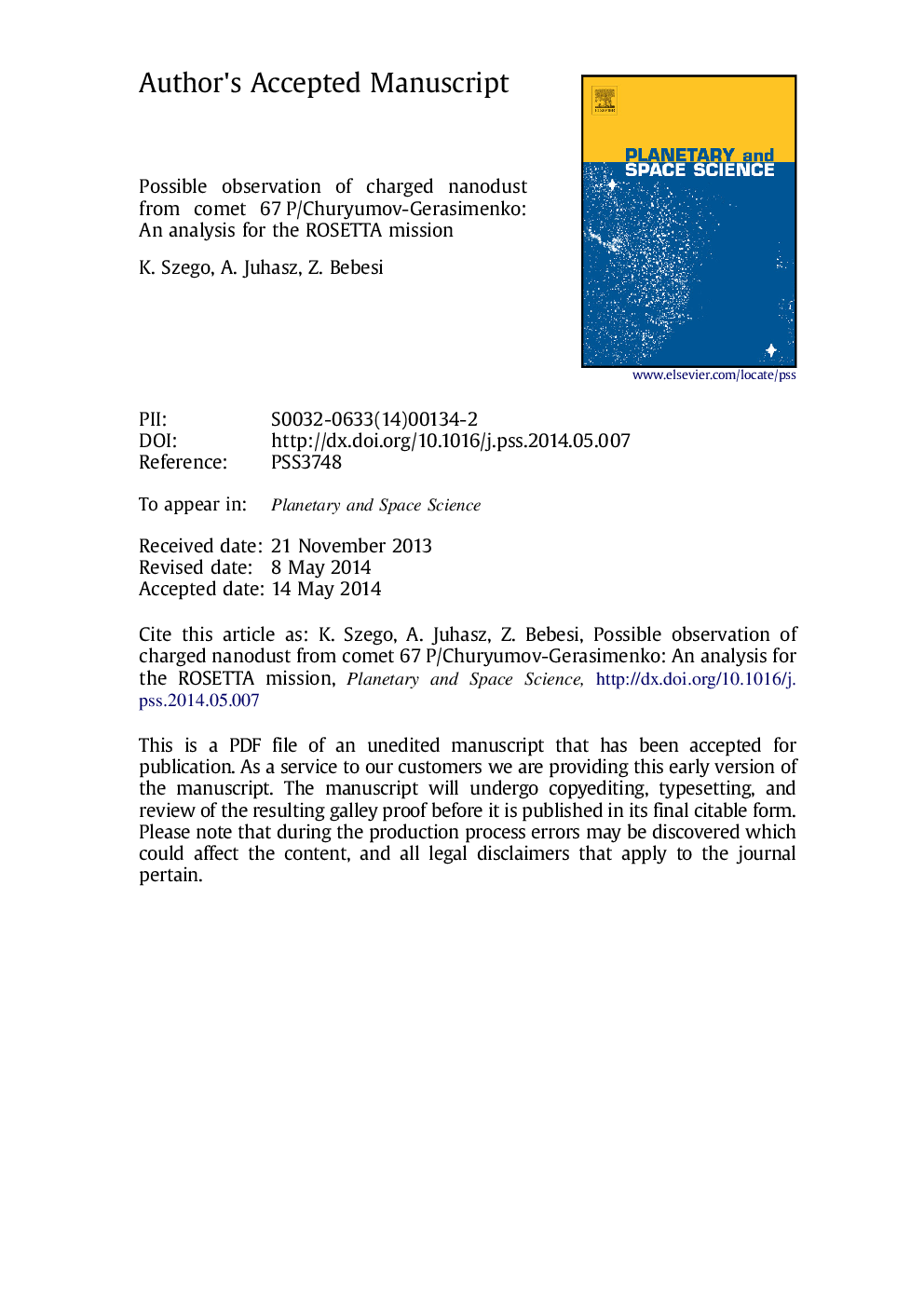| Article ID | Journal | Published Year | Pages | File Type |
|---|---|---|---|---|
| 8143681 | Planetary and Space Science | 2014 | 21 Pages |
Abstract
In this study we investigate whether this is a realistic option. We show that when the comet activity is low between 3.25 and 2.7 AU, the cometary surface and a part of the dust particles get charged due to the charging currents of the solar wind and photoionization as a result of solar radiation. The nucleus׳ surface potential depends on the solar wind density, and it is higher than +4 V for solar zenith angle between 0° and 50° for solar wind density n(d=1 AU)=4Ã10â6 mâ3, and nano-size dust gets immediately accelerated when it collected Q=+1e positive charge due to photoelectron emission. The energy of this charged nanodust is higher than 4 eV and it could be detected not far from the subsolar region by the ion and electron sensor (IES) of the Rosetta Plasma Package. In this paper we examine this process in detail.
Keywords
Related Topics
Physical Sciences and Engineering
Earth and Planetary Sciences
Geophysics
Authors
K. Szego, A. Juhasz, Z. Bebesi,
